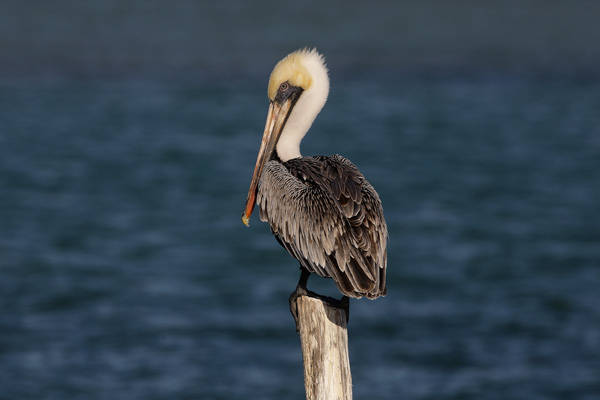Preliminary necropsies by the University of Georgia on some of the more than 200 Brown Pelicans that have washed up on the shores of Topsail Beach on the coast of southeastern North Carolina are inconclusive and do not yet support concerns that foul play was responsible. Complete toxicology and pathology reports are expected to be available soon.
A taskforce including officials from the National Oceanic and Atmospheric Administration and the U.S. Fish and Wildlife Service, as well as state officials, has been formed and has been meeting to investigate the deaths, but so far has not determined a cause. The first dead birds began washing up on shore in November.

© Mike RichardsonBrown Pelican, from the surfbirds galleries.
"Mass bird deaths such as this are certainly troubling and need to be investigated, but they are not especially rare. According to the U.S. Geological Survey, about 160 mass wildlife death events are recorded in the U.S. each year. Sometimes they are weather related and sometimes they are caused by pollution, parasites or diseases, but they frequently have a human component," said Dr. Moira McKernan, Director of the Bird Pesticide Program with American Bird Conservancy, the nation's leading bird conservation organization.
"What is far more significant is the number of bird deaths that go unreported or unrecorded each year because they each occur in smaller numbers and do not command media attention. These include deaths from pesticides and other toxins such as lead from spent ammunition, collisions with communication towers, buildings, or wind turbines, and free-roaming cats. Their cumulative impact, however, is significant, and may total more than one and a half billion birds each year," said Dr. McKernan.
While local reports describe injuries to the pelicans such as broken beaks and gashes on the wings, local officials are quick to point out that such damage is consistent with post mortem scavenging by crabs or other animals, either in the water or onshore, and need not indicate deliberate wounding as a cause of death.
The otherwise good physical condition of the birds suggests they were actively feeding immediately prior to the time of death. Reports indicate that the stomach contents of the birds was also normal.
The Brown Pelican is found along ocean shores from the Gulf Coast to the Chesapeake Bay, and in southern California. It is the only pelican that plunge-dives to catch its food. It may have a wingspan of up to seven feet and weigh about eight pounds. Following rapid and severe declines to Brown Pelican populations in the 1960s and '70s due to DDT use, the species was listed under the Endangered Species Act. After the DDT ban and concerted conservation efforts, the species recovered and was delisted in 2009.

Reader Comments
to our Newsletter